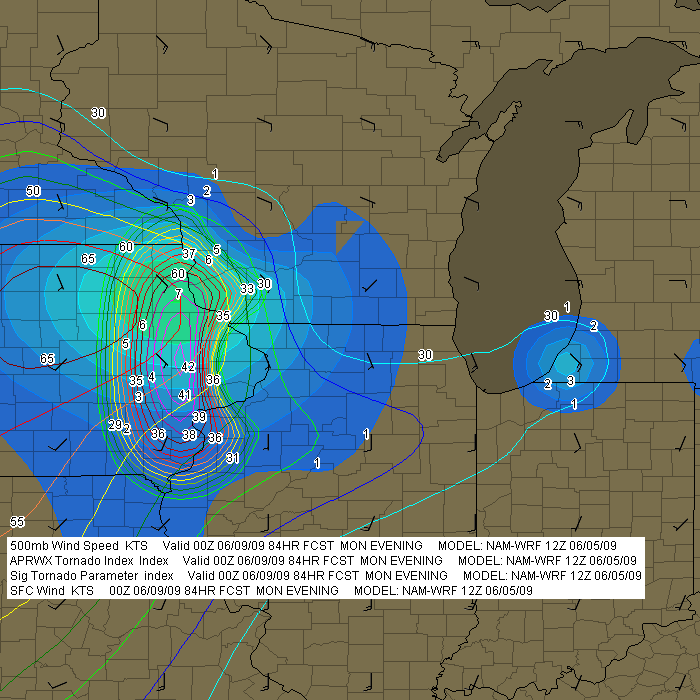If I were to pick a chase target for tomorrow, it would be Rolla, Missouri. That’s based on a sampling of the 6Z model soundings of the GFS, NCEP’s present model preference.
Frankly, though, I can’t get too excited about this system. True, it seems to be shifting the activity to within striking distance, where I could conceivably go chasing and still make it back Friday morning in time to make an appointment that I absolutely can’t miss. But instability isn’t all that great, and besides, who wants to go chasing in Missouri hill country?
If the NAM verifies, things will shift north a bit. But I don’t see that making a practical difference. It’s a marginal setup at this point, and unless things improve, I don’t think I’ll feel short-changed sitting this round out. Maybe the next trough will be an improvement.
ADDENDUM: Ouch! Just looked at the SPC’s afternoon update. If they’re right, then only the desperate and the insane will be chasing tomorrow. They’ve pulled the 30 percent risk down mostly into Arkansas, tapping on southeast Oklahoma, northeast Texas, and extreme southern Missouri down around Branson. Anyone for a chase through the Ozarks?


